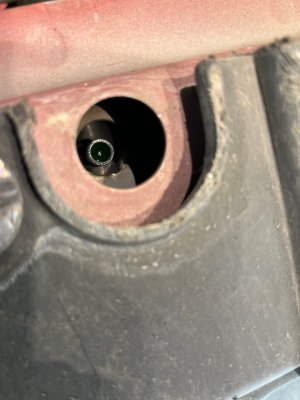Not sure if you're kidding or not, but that's not how o-rings work. An o-ring that shrinks would leak; o-ring rejuvenators (for swimming pool fittings) cause o-rings to swell a bit. o-rings are compressed between two surfaces, usually perpendicular to the direction of joining so that the sealing force is optimal and constant, independent of how much it is tightened. (This petcock, or valve as
@Old Guy described, uses this design, with the sealing force from inside to outside the o-ring.) They often leak when a portion becomes compressed with a flat spot over time. Mine developed a crack and became a "c-ring", which leaked continuously but slowly. For o-rings, measure twice and cut never.

If you're wondering about it, if it feels dry or cracked, or you can detect a flat spot, replace it.







